Speciation
Speciation is the process by which new species evolve from existing species. It occurs when populations of a species become reproductively isolated and diverge from each other over time.
Factors contributing to speciation:
- Geographic isolation: When a population becomes physically separated from the rest of the species, it can evolve independently due to different environmental conditions.
- Reproductive isolation: This can occur through behavioral, temporal, or mechanical barriers that prevent individuals from different populations from interbreeding.
- Genetic drift: Random changes in allele frequencies in small populations can lead to genetic divergence and the formation of new species.
- Natural selection: Different selective pressures in different environments can lead to the evolution of distinct traits and eventually the formation of new species.
Types of speciation:
There are two main types of speciation:
- Allopatric speciation: Occurs when a population is geographically isolated from the rest of the species, leading to reproductive isolation and eventual divergence into a new species.
- Sympatric speciation: Occurs within the same geographic area, often due to factors such as polyploidy (an increase in the number of chromosome sets) or ecological specialization.
Study Tips:
- Understand the concept of reproductive isolation and its role in speciation.
- Learn about the different mechanisms that can lead to reproductive isolation, such as behavioral, temporal, and mechanical barriers.
- Explore examples of speciation in different organisms, such as Darwin's finches or cichlid fish in African lakes.
- Understand the role of genetic drift and natural selection in the formation of new species.
- Compare and contrast allopatric and sympatric speciation, and be able to explain the differences between the two processes.
◂Science Worksheets and Study Guides Fifth Grade. The 6-Kingdoms of life
Study Guide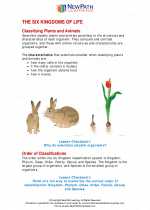 The 6-Kingdoms of life
The 6-Kingdoms of life  Activity Lesson
Activity Lesson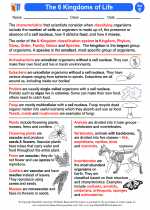 Kingdoms
Kingdoms  Worksheet/Answer key
Worksheet/Answer key The 6-Kingdoms of life
The 6-Kingdoms of life  Worksheet/Answer key
Worksheet/Answer key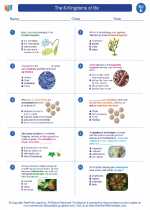 The 6-Kingdoms of life
The 6-Kingdoms of life  Worksheet/Answer key
Worksheet/Answer key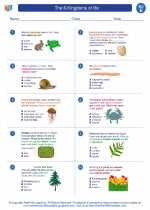 The 6-Kingdoms of life
The 6-Kingdoms of life  Worksheet/Answer key
Worksheet/Answer key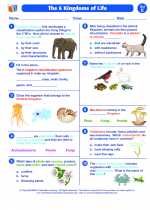 The 6-Kingdoms of life
The 6-Kingdoms of life  Vocabulary/Answer key
Vocabulary/Answer key The 6-Kingdoms of life
The 6-Kingdoms of life  Vocabulary/Answer key
Vocabulary/Answer key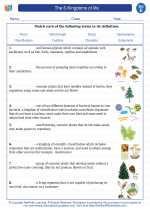 The 6-Kingdoms of life
The 6-Kingdoms of life  Vocabulary/Answer key
Vocabulary/Answer key The 6-Kingdoms of life
The 6-Kingdoms of life  Vocabulary/Answer key
Vocabulary/Answer key The 6-Kingdoms of life
The 6-Kingdoms of life 

 Activity Lesson
Activity Lesson
 Worksheet/Answer key
Worksheet/Answer key
 Worksheet/Answer key
Worksheet/Answer key
 Worksheet/Answer key
Worksheet/Answer key
 Worksheet/Answer key
Worksheet/Answer key
 Vocabulary/Answer key
Vocabulary/Answer key
 Vocabulary/Answer key
Vocabulary/Answer key
 Vocabulary/Answer key
Vocabulary/Answer key
 Vocabulary/Answer key
Vocabulary/Answer key

The resources above cover the following skills:
Concepts of Life Science (SC1, SC2, SC3)
The student demonstrates an understanding of the structure, function, behavior, development, life cycles, and diversity of living organisms by identifying and sorting animals into groups using basic external and internal features.